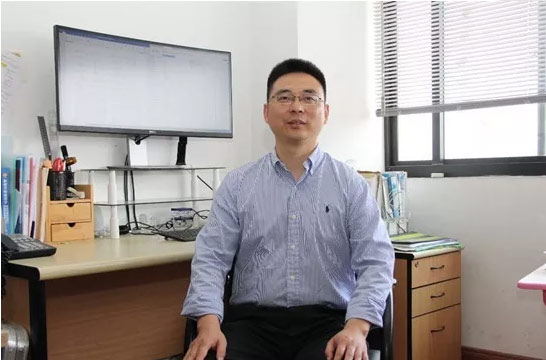Yao Yefeng, Professor of East China Normal University, Director of Shanghai Magnetic Resonance Key Laboratory. The graduate student studied at East China Normal University and was led by Professor Chen Qun, a solid nuclear magnetic expert. After graduation, he went to the Max Planck Institute of Polymer Science in Germany to study for a doctorate. He studied under the famous solid nuclear magnetic expert HW Spiess and continued to work on solid nuclear magnetic and polymer. Physical research. In 2008, he returned to China and officially entered the Shanghai Magnetic Resonance Key Laboratory.
After returning to China, Professor Yao Yefeng has been engaged in the open and applied research of nuclear magnetic technology. The application system of nuclear magnetic method includes: the structure and performance of high performance polyolefin materials, solid electrolyte and all solid state batteries, perovskite structural materials and properties. In the research and development of nuclear magnetic equipment, Professor Yao Yefeng developed a set of super-polarization equipment based on para-hydrogen, and developed a series of long-life spin single-state preparation techniques for the growth of secondary hydrogen hyperpolarized signals. Since 2013, 49 SCI articles have been published, including 26 articles with an impact factor of 5 or higher. Due to the special research work on high-performance polyethylene materials, he was hired as a technical consultant by Teijin Aramid in the Netherlands to guide the research and development of ultra-high-strength polyethylene fibers. Wang Tianyi won the Spectrum Science Award for his work in the research and application of solid nuclear magnetics.
After returning to China for 10 years, Professor Yao Yefeng said that the development process of key laboratories is like a few treasures. “The laboratory was founded in 1952, and the name was called “Hua Shida Spectrum Teaching and Research Office.” The founder, Mr. Yan Xuewen, was very knowledgeable in the field of nuclear magnetic resonance. As early as 1958, he used his own instruments to observe nuclear magnetic resonance phenomena in China. In the 1980s, it won the Shanghai Science and Technology Awards for its own research and development of nuclear magnetic resonance instruments. In the founding of the founder in the field of instrument development and engineering, the laboratory formed the development of magnetic resonance medical imaging and low field nuclear magnetic instrument system Features, has successively hatched Shanghai Keller MRI Co., Ltd., which is engaged in medical and imaging nuclear magnetic research and development, and Shanghai Newmai Electronic Technology Co., Ltd. (now Suzhou Neway Analytical Instrument Co., Ltd.), which is mainly engaged in the research and development of low field nuclear magnetic instruments. ”
The key laboratory currently has a MIT nuclear magnetic resonance imager, a 500MHz liquid/600MHz solid wide cavity/700MHz liquid NMR spectrometer, and a VTMR NMR temperature change analyzer from Newmarket analysis. Professor Yao Yefeng said: “To see the future of low-field nuclear magnetics in the industrial and scientific fields, we have cooperated with Niumag to build a joint laboratory of magnetic resonance technology, aiming to create a low-field nuclear magnetic R&D and application-oriented laboratory.”

 NIUMAG
NIUMAG